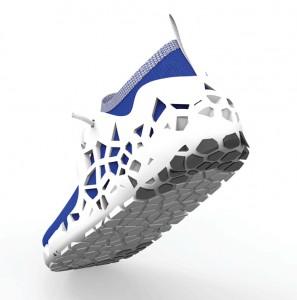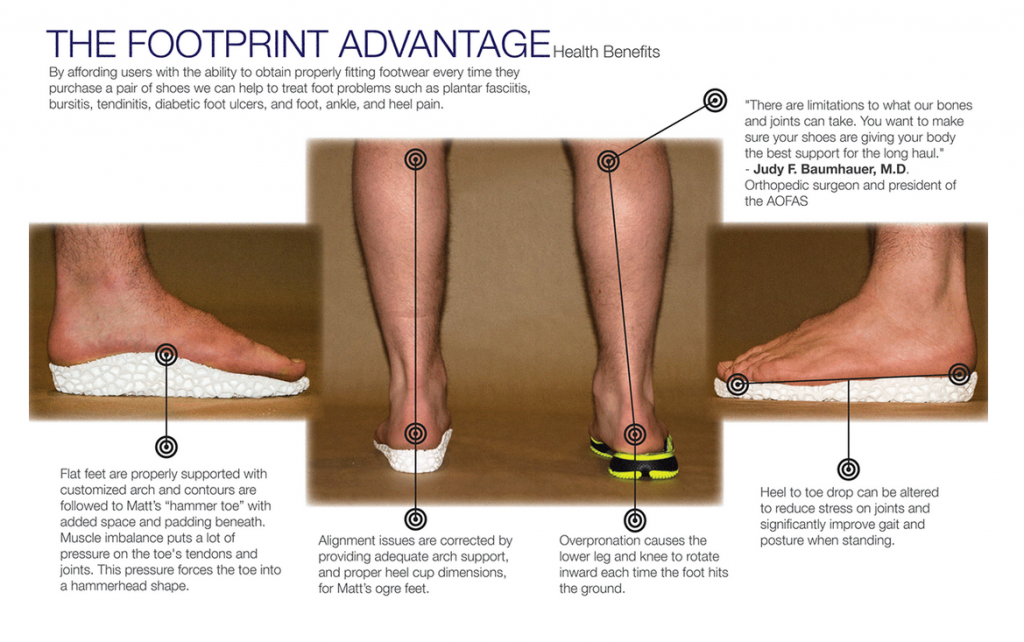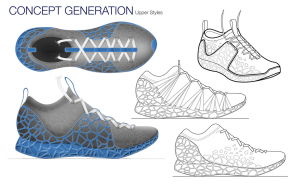 Absolute customization and personalization has always been the endgame for 3D printing technology. Being able to create products, clothing, furniture and environments, structured to societies’ exact needs and specifications, is a lofty goal seemingly born out of Star Trek, but there is no denying that it would make all of our lives easier and potentially healthier. And while that 3D printed future is still only in its infancy, dozens of industries, designers, artists, educators and students are already using 3D printing and 3D scanning technology to solve problems and improve the way that we live in our environments.
Absolute customization and personalization has always been the endgame for 3D printing technology. Being able to create products, clothing, furniture and environments, structured to societies’ exact needs and specifications, is a lofty goal seemingly born out of Star Trek, but there is no denying that it would make all of our lives easier and potentially healthier. And while that 3D printed future is still only in its infancy, dozens of industries, designers, artists, educators and students are already using 3D printing and 3D scanning technology to solve problems and improve the way that we live in our environments.
3D printing has helped researchers develop major advances in the healthcare industry, from 3D printed bone replacements, customized 3D printed surgical guides, dental work and even 3D printed models used in surgical pre-planning. And now a pair of Industrial Design students at Philadelphia University’s Masters Program are using 3D scanning and 3D printing to prevent medical problems of the foot, by creating customized footwear that is made to conform exactly to the wearer’s needs. Their thesis project is called FOOTPRINT: 3D Printed Custom Algorithmic Footwear and their goal is to produce cutting edge shoes by incorporating 3D scanning, algorithmic model development, rapid manufacturing, and advanced textile technologies.
Matt Flail and Tim Ganter tell 3DPrint.com that they chose their thesis project after noticing that there are a lot of problems with the way that we make, size and use even our most advanced footwear options. The reality is, that even the best shoes on the market tend to be designed for a general user, not a specific user. Because no two feet are ever exactly alike, not even our own feet, the standard sizing system that is currently used, is incredibly insufficient. Shoes and healthy feet are such an important part of modern life, it doesn’t make a lot of sense to continue to not produce them for specific users, almost as if they were prosthetic devices. Because even the best shoe on the market allows for an inefficient fit that leads to improper alignment with the wearer’s body, this can lead to or exacerbate joint and muscle problems in the ankles, knees, hips, and back.
“Another problem is that the manufacturing process has not changed over the past few decades. Each style is manufactured using costly molds and tooling, this includes molds for different types of materials used throughout the foot. Also, a large amount of material is wasted during manufacturing, from molding pieces out of foam to die cutting material for the uppers. 20 billion pairs of shoes are produced annually and roughly 300 Million pairs are thrown away each year, and that doesn’t even include the waste that comes from the factories themselves. Also, EVA, the most common shoe midsole foam, can last for up to 1000 years in a landfill and is not recyclable,” the pair explained.
 The goal of Flail and Ganter’s thesis project was to redesign and reconceive how footwear is made from top to bottom, changing not only the sizing methods, but the manufacturing and materials being used as well. They studied some of the highest quality sport footwear on the market, including the NIKE Flyknit and ADIDAS Primeknit lines of sport shoes. They also consulted with a series of podiatrists and footwear experts to determine the most efficient and effective method of properly fitting shoes.
The goal of Flail and Ganter’s thesis project was to redesign and reconceive how footwear is made from top to bottom, changing not only the sizing methods, but the manufacturing and materials being used as well. They studied some of the highest quality sport footwear on the market, including the NIKE Flyknit and ADIDAS Primeknit lines of sport shoes. They also consulted with a series of podiatrists and footwear experts to determine the most efficient and effective method of properly fitting shoes.
“We spoke with a number of podiatrists to gain insight on how to best support different foot types, what they’re looking for in proper fitting footwear, and what the problems with orthotics are,” They explain. “The biggest insight we found was that a huge issue with orthotics is trying to correctly fit them into footwear. You could have an orthotic that fits your foot perfectly and supports it correctly when laid on flat ground, but if it doesn’t fit into the sneaker correctly it can do more harm than good.”
These insights led the duo to 3D scanning using photogrammetry software and structured light scanning which would create detailed 3D models of a specific user’s foot.
The three criteria that they decided were essential for their design process was to rethink manufacturing methods with a reduction of material waste and the elimination of costly molds and tooling. They also want to create a customized fit based on the exact shape, size and support needs of the user’s foot. And finally they wanted to reduce or completely eliminate the excessive waste created by modern manufacturing methods.
While developing FOOTPRINT, Flail and Ganter tested multiple 3D printable materials and 3D manufacturing methods, eventually deciding that a selective laser sintering (SLS) process gave them the best results for their project requirements, using powdered nylon based DuraForm Flex 3D printing material for the insole and support structure, and WHOLEGARMENT knitting process that uses steam to shape the shoe to a specific person’s foot.
Here is a quick video of the final prototype that Flail and Ganter designed for their thesis:
While their initial research was directed at sport or running shoes, it wasn’t far into the prototyping process that Flail and Ganter discovered that customized shoes of this nature would be beneficial for all types of footwear. Having recently received an educational grant from Shapeways, the pair now has more research funds available to them and will continue to develop alternative concepts and shoe structures. You can read more about the FOOTPRINT thesis over on Behance. Let us know what you think of this new shoe technology over on our Algorithmic 3D Printed Shoes of the Future forum on 3DPB.com.
Subscribe to Our Email Newsletter
Stay up-to-date on all the latest news from the 3D printing industry and receive information and offers from third party vendors.
You May Also Like
IperionX Inks 10-Year Deal with Wisconsin Manufacturer for 80 Metric Tons of Titanium Per Year
IperionX, the Charlotte-based supplier of sustainable titanium powders used for additive manufacturing (AM) and metal injection molding (MIM), has signed a ten-year deal with United Stars, a group of industrial...
Gastronology Launches Industrial Production of 3D Printed Food for Dysphagia Patients
Food 3D printing has, in many ways, been an additive manufacturing (AM) segment looking for the right business case. While some applications are beautiful and others may or may not...
Lockheed Martin Leads $3M Investment in Q5D’s Electronics 3D Printing System
Q5D, an original equipment manufacturer (OEM) of robotic arm, hybrid additive manufacturing (AM) systems used for wire harness production, has closed a $3 million investment round. The investment arm of...
3D Printing News Briefs, April 6, 2024: Depowdering, Cybertruck Door Handles, & More
In today’s 3D Printing News Briefs, ioTech’s digital manufacturing CLAD technology is opening up opportunities for microelectronics and additive manufacturing. Hexagon and Raytheon Technologies commercially released the Simufact Additive Process...
































